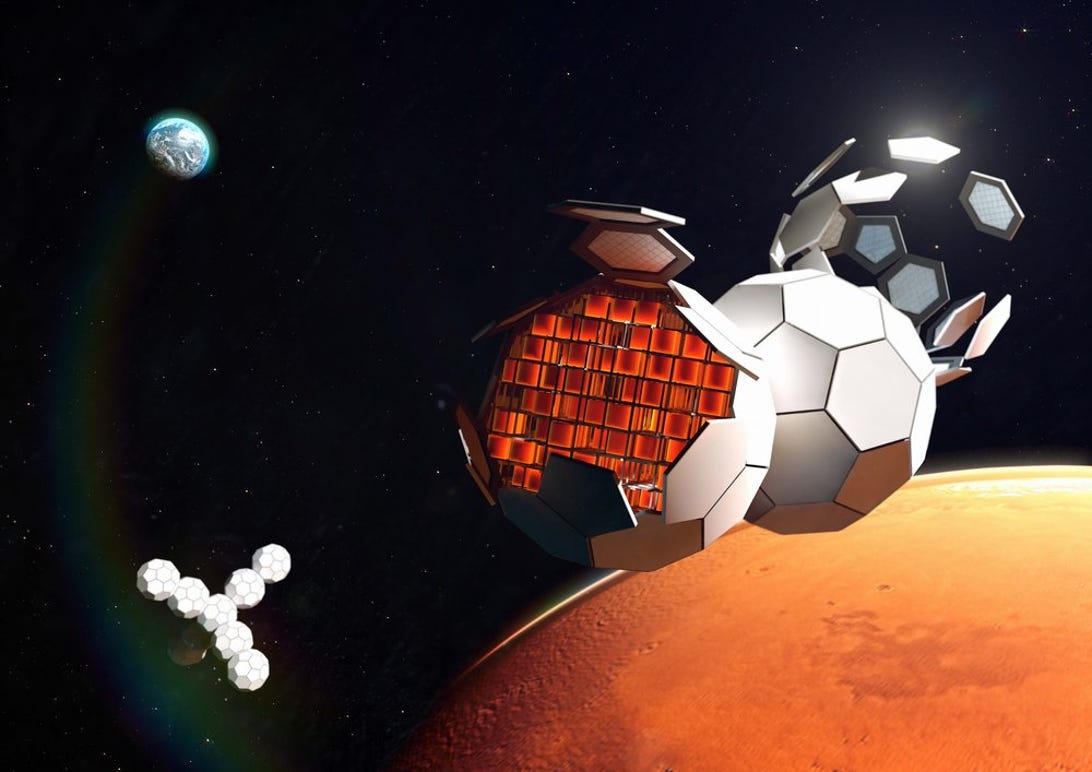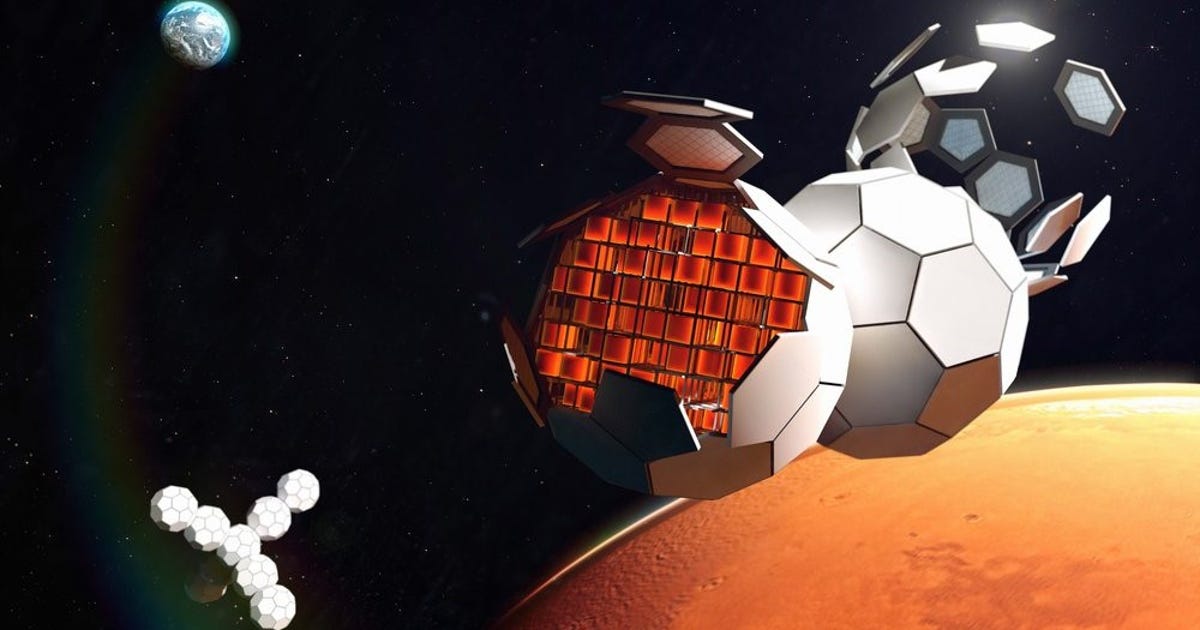
Artist’s depiction of a long run Tesserae self-assembling house station in orbit round Mars.
MIT House Exploration Initiative / TU Dortmund Fraunhofer Institute
On Friday SpaceX introduced the first totally personal venture to the Global House Station, however the newly minted astronauts would possibly not simply be taking part in vacationers in orbit. As a substitute, they’re going to be engaging in quite a few experiments, together with a cutting-edge development methodology that might tell how long run house stations come in combination.
The Axiom-1 venture is sending former NASA astronaut Michael Lopez-Allegria, American pilot and adventurer Larry Connor, investor and previous Israeli fighter pilot Eytan Stibbe and Canadian entrepreneur and govt Mark Pathy to the ISS for an eight-day keep.
The staff’s analysis time table comprises paintings with an air filtration software, mobile biology experiments and a robot swarm of self-assembling tiles that will probably be of particular curiosity to long run astronauts.
The tiles are an early prototype of “Tesserae,” or Tessellated Electromagnetic House Constructions for the Exploration of Reconfigurable, Adaptive Environments, evolved by means of an MIT Media Lab staff led by means of Ariel Ekblaw.
The hexagonal and pentagonal tiles are designed to coordinate by way of keep an eye on code and self-assemble by way of “electro-permanent magnets.” The tiles also are able to sealing to create a pressurized atmosphere. The beneath video illustrates how a full-scale instance of the era would possibly come in combination.
The analysis builds on a prior check aboard the station that noticed seven tiles construct in microgravity. This iteration of the experiment will contain the use of a suite of tiles that paintings with Raspberry Pi controllers; they’re going to be launched in an aisleway of the ISS to self-assemble.
“The most recent prototypes come with an intensive suite of sensing and electro-permanent magnet actuation for complete diagnostic capacity (figuring out ‘just right’ and ‘dangerous’ bonds between tiles as they sign up for) and construction reconfigurability,” reads NASA’s motion plan for the experiment.
An Axiom House commentary provides that the analysis will “discover a brand new frontier for in-orbit development of satellites and long run house habitats.”
If all is going neatly, MIT and Ekblaw hope that the era will sooner or later be used for geodesic dome habitats past Earth, microgravity live performance halls and house cathedrals.
However sooner than then, the experiment is ready initially extra trivial considerations: The primary merchandise at the analysis time table for the venture is ensuring the machine is totally charged.
Get the CNET Daily News newsletter
Catch up on the biggest news stories in minutes. Delivered on weekdays.

